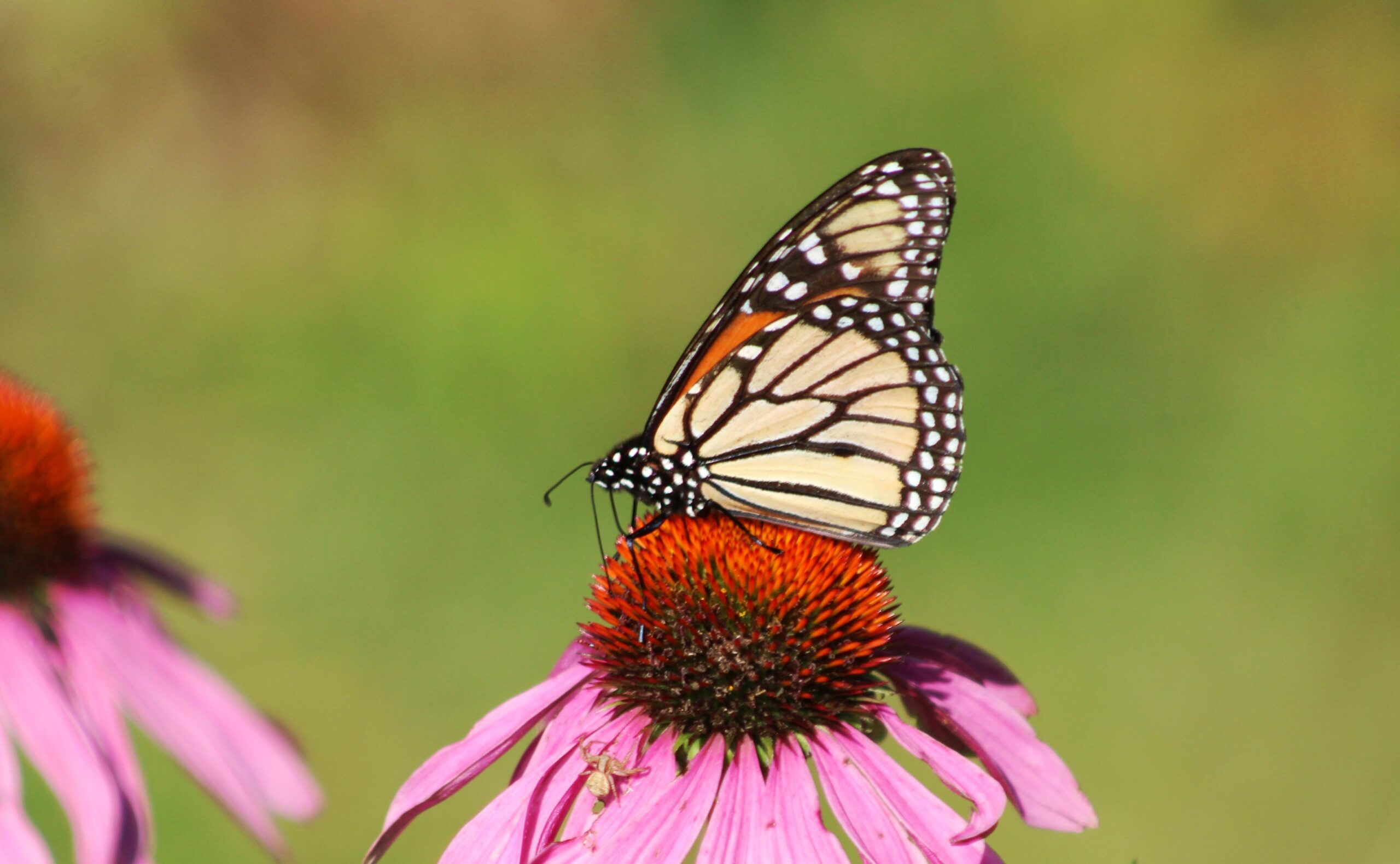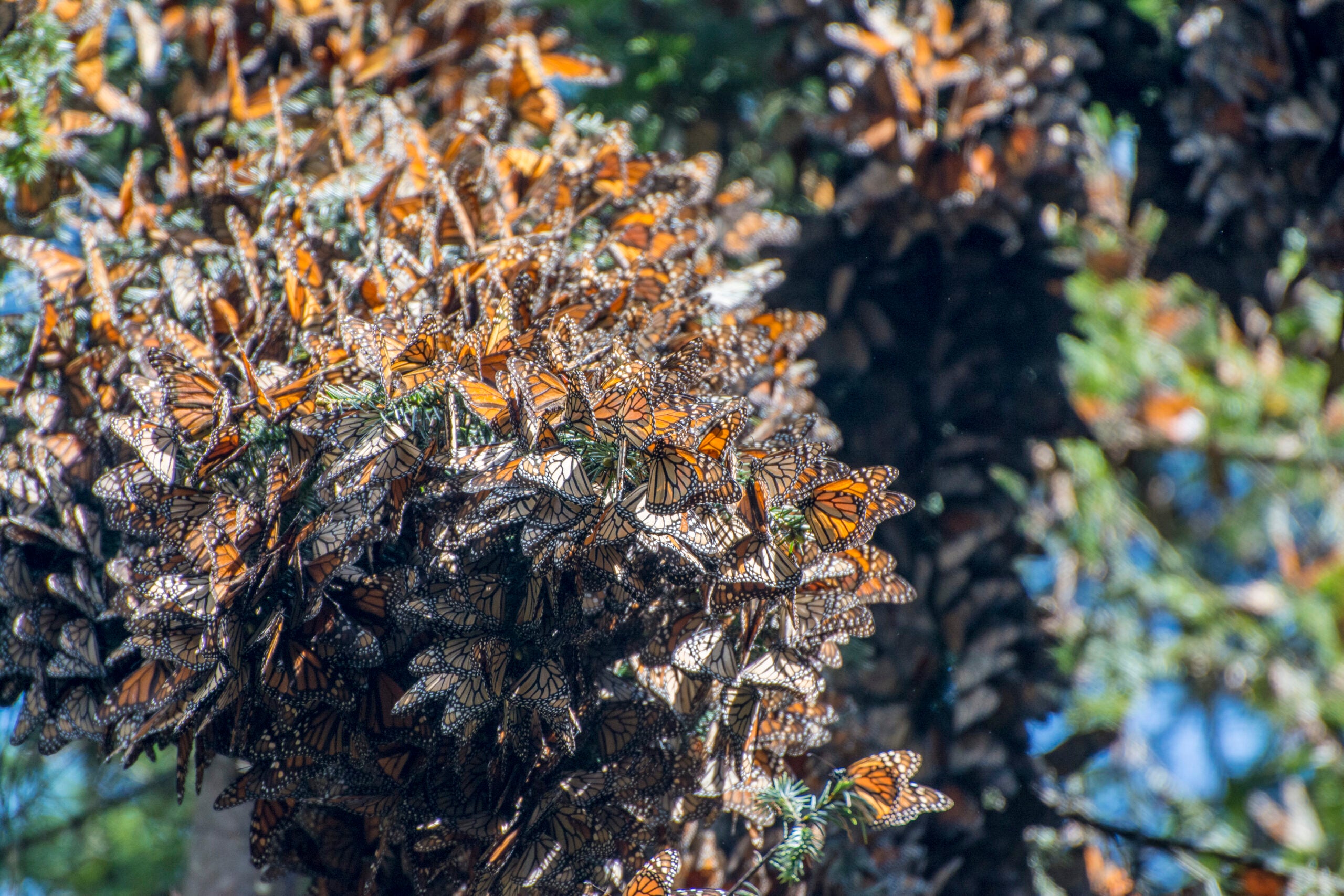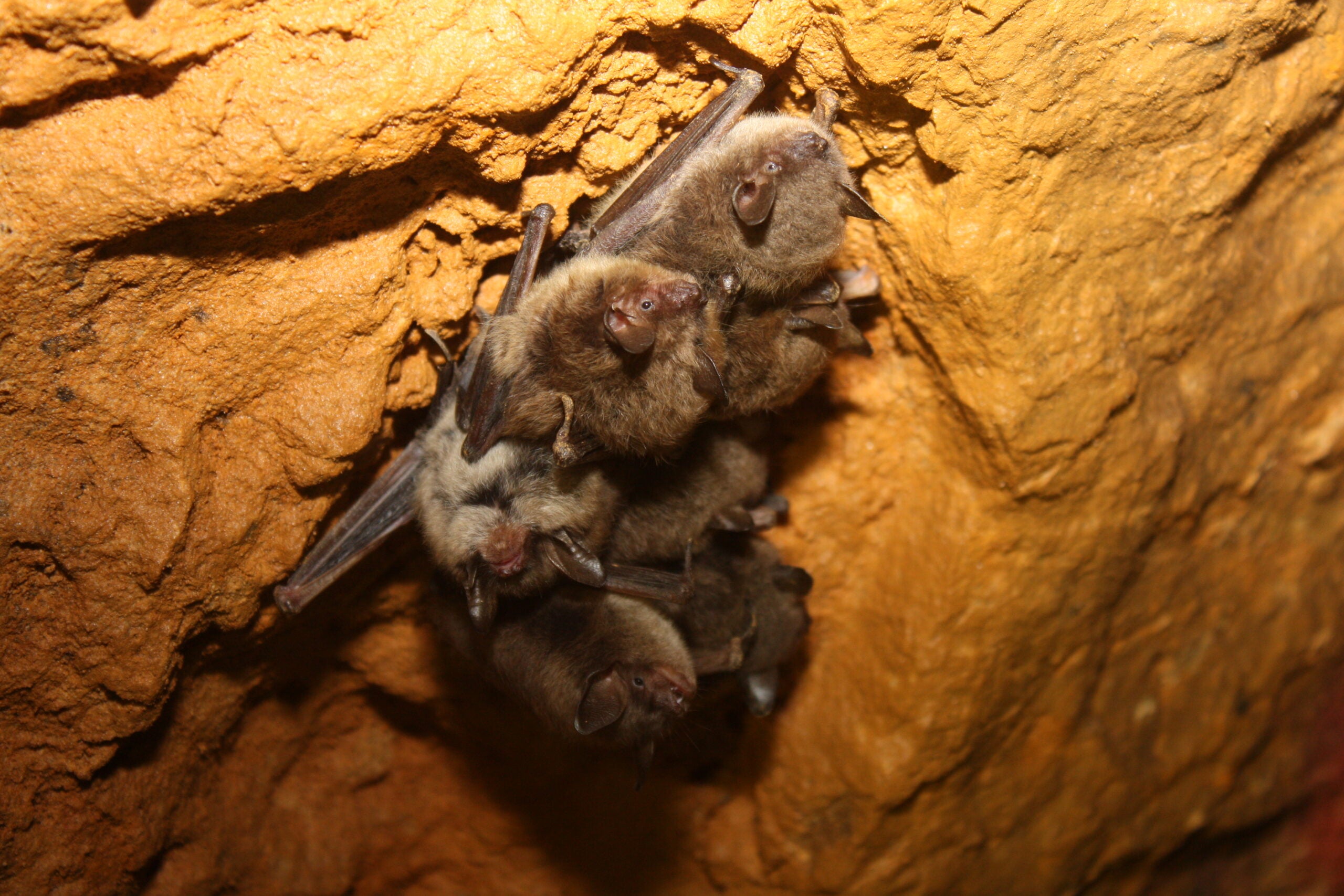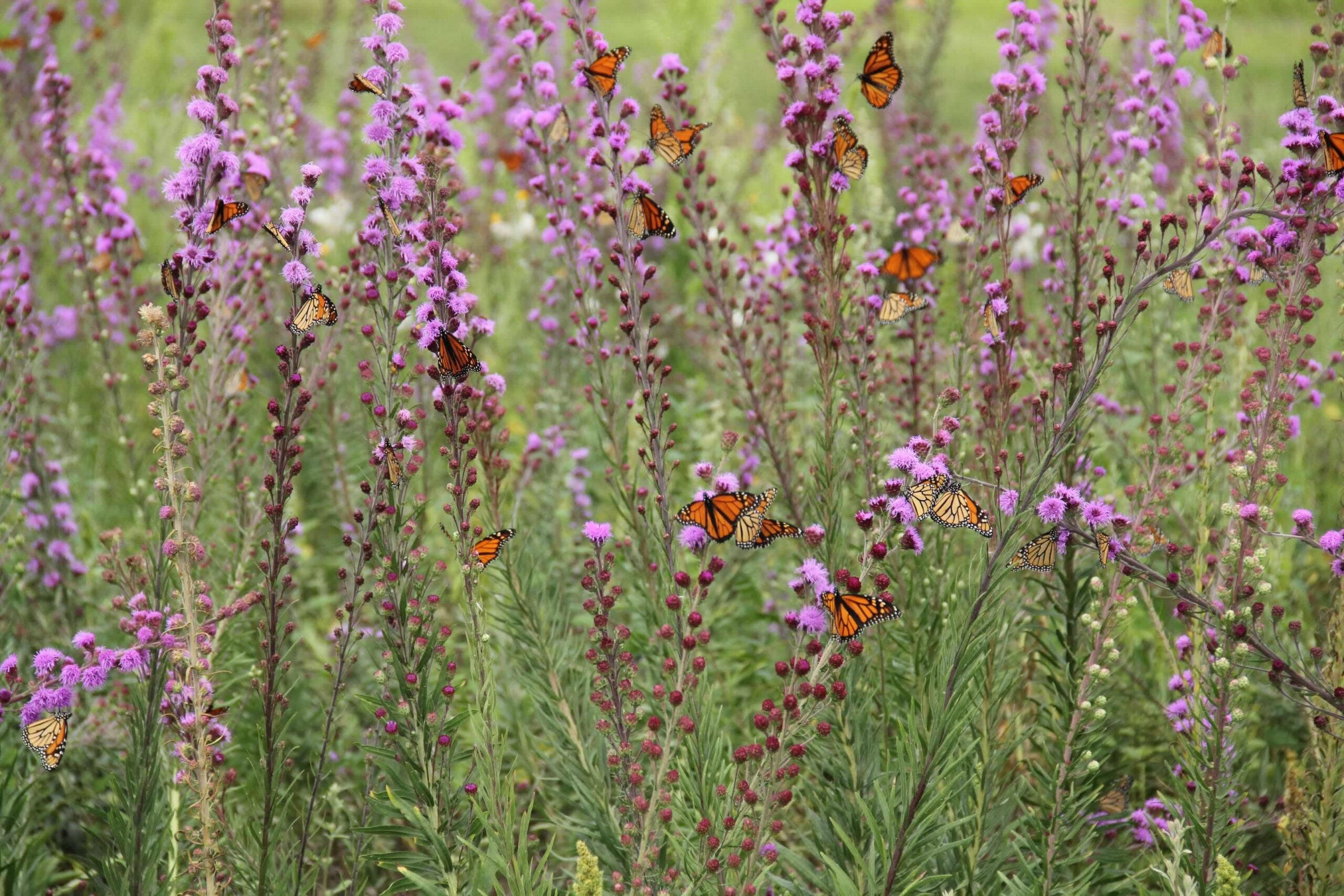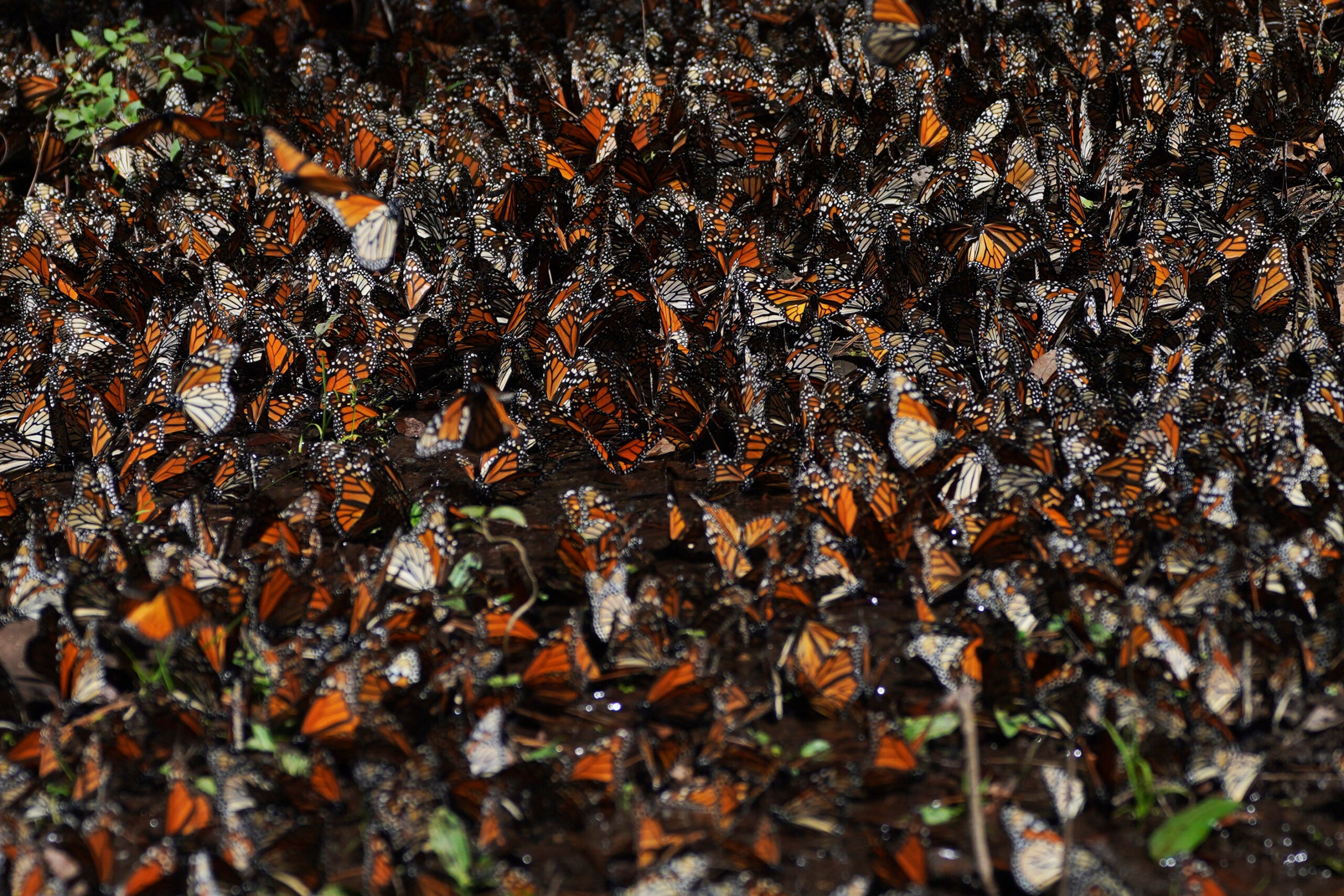What started in a lab in the 1990s has evolved into a mass volunteer effort to track the monarch butterfly.
Karen Oberhauser was a professor at the University of Minnesota when she and her students started collecting data on the monarch butterfly population in 1996. The next year, they started recruiting volunteers to help what became the international Monarch Larva Monitoring Project.
“The goal of the project is to collect data on monarchs during the breeding phase of their annual migratory cycle,” Oberhauser said. “What the Monarch Larva Monitoring Project does is track the distribution of monarchs throughout that northern breeding range and also their abundance.”
Stay informed on the latest news
Sign up for WPR’s email newsletter.
Four years later, she moved to the University of Wisconsin-Madison. The project is now run jointly by the UW-Madison Arboretum and the Monarch Joint Venture. In 2013, Oberhauser was named a White House Champion of Change for Citizen Science for her work.
Volunteers go out into milkweed patches — in their backyards, nature centers, along a road by a school, anywhere — and count the number of eggs and caterpillars they see on the plants. They monitor at least 10 milkweed plants on a weekly basis and track the number of monarchs per plant.
The effort has hundreds of volunteers across the country. Yet the monarch population is declining, a trend Oberhauser has seen over the last 30 years.
“I feel like anything that we see in our lifetime, to a human, feels rapid. So I’ve been studying monarchs since the 1980s, and I’ve seen a huge decline,” Oberhauser said. “I am worried that it feels fast when it’s in a lifetime. And if this decline continues, then they’ll be gone.”
Just last year, the monarch butterfly was classified as an endangered species by the International Union for Conservation of Nature.
Habitat loss, climate change threaten ‘iconic’ species
Every year, millions of monarchs migrate south, where those east of the Rocky Mountains settle in Mexico and those west overwinter in California.
During the 2022-2023 winter season, the Eastern migratory monarch butterfly population plunged by 22 percent, according to data from the World Wildlife Fund.
Researchers with those groups pointed to deforestation, widespread herbicide application and extreme weather conditions as reasons for the decline in numbers.
On top of that, Oberhauser said volunteers are seeing year-to-year variations in the population mostly driven by extreme weather conditions.
“Hot and dry conditions are bad for monarchs. Cold and wet conditions are bad for monarchs,” she said. “Really, the best year for monarchs is a year that gets enough rain but not too much. And that is warm, but not too warm.”
Julia Whidden, citizen science coordinator at the UW-Madison Arboretum, described monarchs as iconic and charismatic creatures, saying their wide recognition makes their decline all the more concerning.
“If this species is in decline, think about what it represents for all of the species that we’re not paying attention to, that don’t have so much public engagement and investment,” she said.
While the overall population is declining, Whidden said the Western population is in greater peril because its numbers are falling at a faster rate.
The Western population has fallen by about 99.9 percent — from 10 million to 1,914 butterflies — between the 1980s and 2021. The eastern population has dropped by 84 percent from 1996 to 2014, according to the International Union for Conservation of Nature.
One bright spot: the Western population saw a significant rebound last year, with more than 335,000 butterflies being counted.
Whidden said monarchs are especially vulnerable to regional climatic changes because of the different habitats they depend on.
“It’s not like they just live in this one small area where we can model exactly what’s going to happen there,” Whidden said. “They cover just a huge swath of land, so that definitely makes conservation more challenging in the face of climate change.”
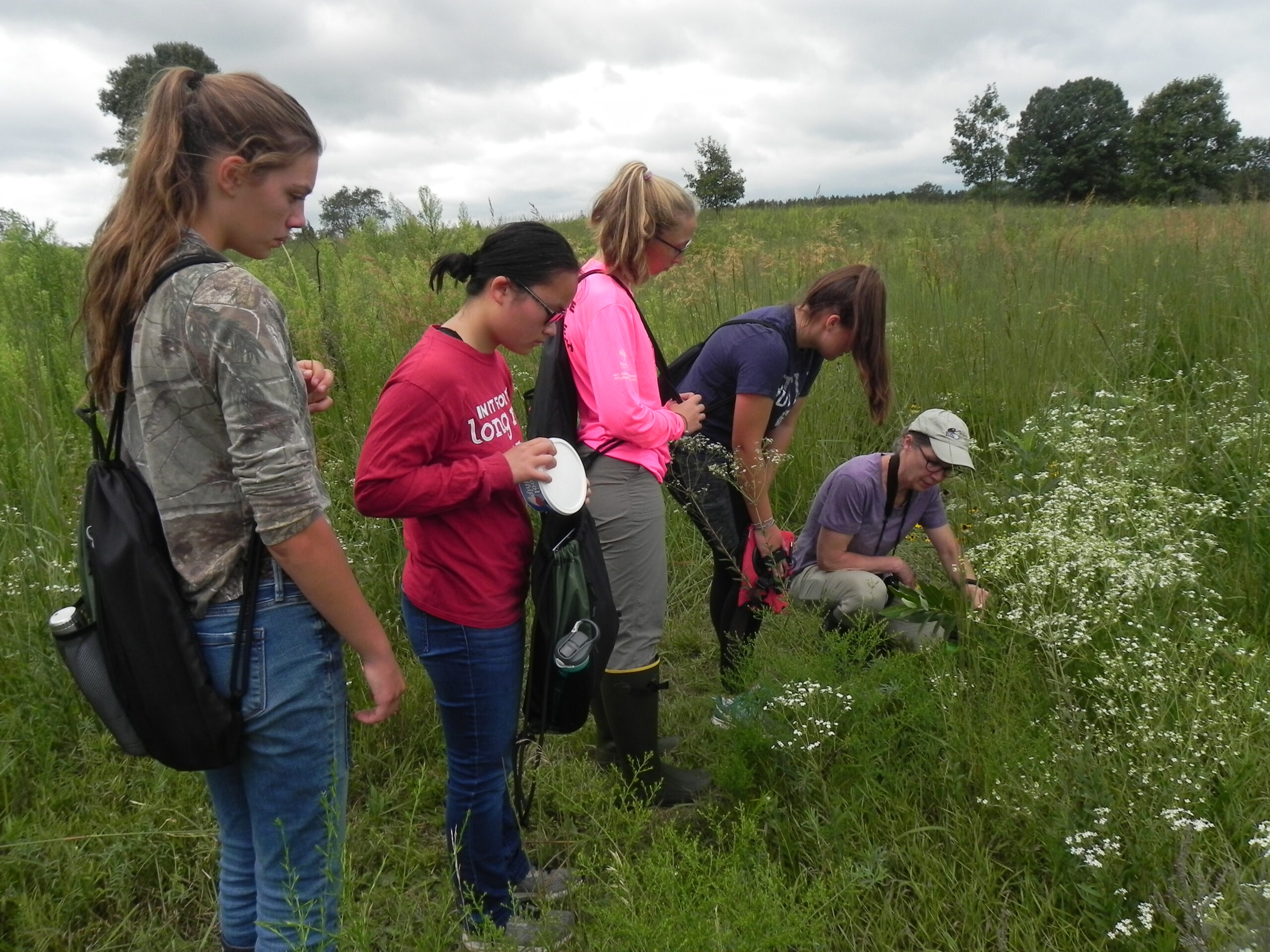
Restoring monarch habitat key to growing their population
Despite the monarch population falling, their habitats can be restored.
“We have the opportunity to provide more habitat and bring the population up to what it used to be,” Oberhauser said.
Whidden and Oberhauser offered different ways the public can help, like planting native milkweed and nectar plants to create more habitat for the species.
North America is home to more than 100 species of milkweed, one-fourth of which are host plants for the monarch, according to the U.S. Department of Agriculture.
People can also join the effort and monitor the species at home.
“You can provide really, really valuable data from your backyard,” Whidden said. “Monitoring is hugely helpful because monarchs have such a huge range.”
The UW-Madison Arboretum also has a program called “Journey North,” where people can report monarchs they see in the spring and fall.
“We know what’s driven this decline in monarch numbers,” Oberhauser said. “So we know what we have to do.”
Wisconsin Public Radio, © Copyright 2025, Board of Regents of the University of Wisconsin System and Wisconsin Educational Communications Board.
